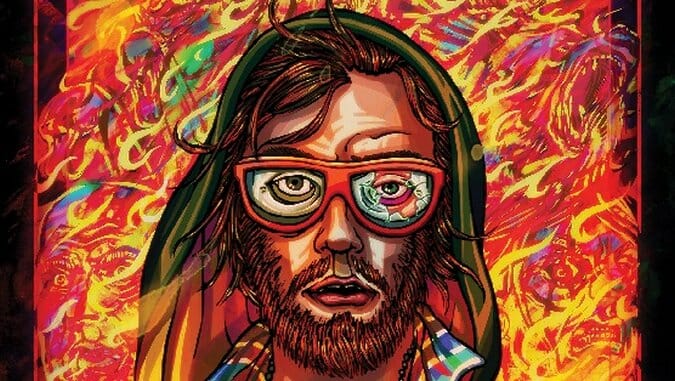Hotline Miami 2: Wrong Number—Gore Bore

When Hotline Miami came out in 2012, I cut it a lot of slack—maybe too much slack. Spec Ops: The Line and Far Cry 3 came out that same year, both capitalizing on a similar theme: a hyper-violent game that took the protagonist (and, by extension, the player) to task for enjoying themselves a bit too much. Hotline Miami’s final knife-twist was the decision to include representations of the game’s own creators in-game, playing the roles of the masterminds behind all the murders that the protagonist (and the player) had performed. Three years ago, I was impressed.
At the time, the idea of condemning the player felt new enough, and I liked the idea of the developers condemning themselves as well. By putting their own avatars into the game—as the villains at the top of the chain, no less—it felt to me as though Dennaton Games had taken responsibility for the bloody cult hit they had created. Hotline Miami was a horrifically violent, fast-paced indie darling that made methodical murder fun while also spooning on a heaping helping of guilt between every level. The neon lights, the pulsing soundtrack, the lo-fi graphics that prevented you from ever really relating to anything that was happening on-screen—it felt like downing slimy cocktail after slimy cocktail on a Sunday night. I knew it was all going to go wrong, but in the moment, I felt unstoppable.
Hotline Miami 2 is the bad hangover that I woke up with the following day.
It’s hard for me to imagine how this game could be worse. Remember the environmental storytelling in the first Hotline Miami, the dream sequences and slow reveals? Replace that with tons of characters who I couldn’t get myself to care much about, since the perspective of the narrative kept switching between them. Remember getting to choose which mask you would wear, which power-ups you would use on each level? Throw that idea out—usually, you don’t get to choose which mask you wear in a given level, or which part you play in the story. You’ll be inexplicably shuffled from role to dehumanizing role. Which murderer will you be asked to relate to next? Who cares??
The game begins with a rape scene—and, thankfully, the option to skip past it if you want to. The inclusion of this scene offers absolutely no narrative pay-off or relevance whatsoever. It concludes with an off-screen director shouting “Cut!” because it turns out the rape wasn’t, like, real and you’re just an actor who’s playing the part of a rapist in a movie. Get it? It’s like how you’re also just playing the role of a murderer in this videogame. Nothing is reaaallll, mannnn.
The game plunges you immediately into super-hard levels. If you didn’t get psyched for this game by replaying the first Hotline Miami, you might have to do what I did and google around to remember the controls and the tricks—because the game’s not going to remind you, nor even offer much in the way of a tutorial. Here’s one personal tip for you: in my PC version of the game, I found the use of the scroll wheel for locking on to enemies to be impossible; I changed that control to the “B” key so I could use my thumb instead, and found it much more manageable.
You’ll need to get used to using the shift key to look around and the lock-on key to line up shots from very far away this time around, because Hotline Miami 2 has lots of huge levels. Unlike the prior game, which had a slow difficulty ramp-up and tons of tiny rooms to plow through, Hotline Miami 2 focuses more on timing and planning. Because the levels often are bigger and have more enemies, I found myself planning my murders out by the dozens in a way that I never had to the first time around. I’d plan everything, from my own movements to exactly which weapons I’d switch and where and when I’d do the swaps and what order and so on.
This behavior all made me feel disgusted and angry, rather than thrilled or excited as I think I was meant to feel. Part of the unnerving charm of the first Hotline Miami was that it moved so quickly that I often felt like I had very little time to plan anything; I flew by the seat of my pants, high on the experience and the music.
